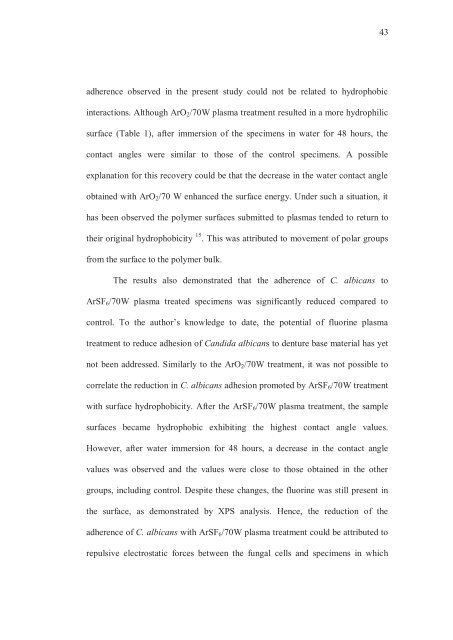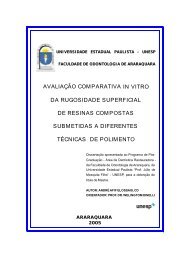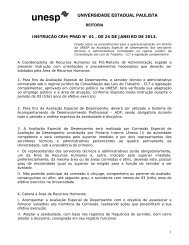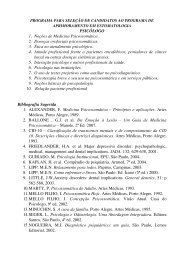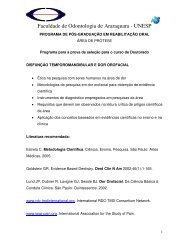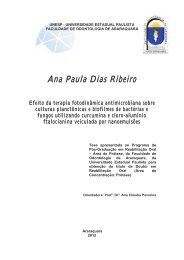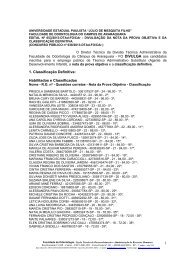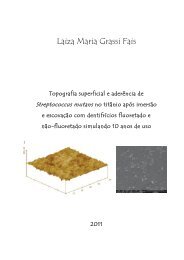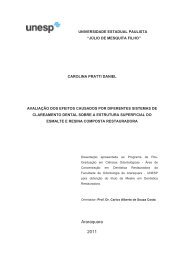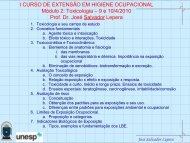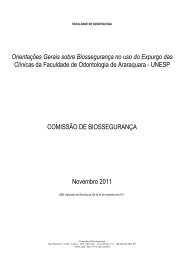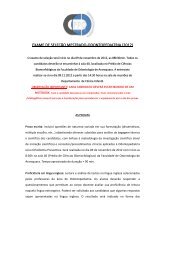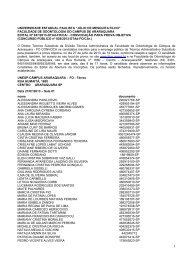universidade de são paulo - Faculdade de Odontologia - Unesp
universidade de são paulo - Faculdade de Odontologia - Unesp
universidade de são paulo - Faculdade de Odontologia - Unesp
You also want an ePaper? Increase the reach of your titles
YUMPU automatically turns print PDFs into web optimized ePapers that Google loves.
43<br />
adherence observed in the present study could not be related to hydrophobic<br />
interactions. Although ArO 2 /70W plasma treatment resulted in a more hydrophilic<br />
surface (Table 1), after immersion of the specimens in water for 48 hours, the<br />
contact angles were similar to those of the control specimens. A possible<br />
explanation for this recovery could be that the <strong>de</strong>crease in the water contact angle<br />
obtained with ArO 2 /70 W enhanced the surface energy. Un<strong>de</strong>r such a situation, it<br />
has been observed the polymer surfaces submitted to plasmas ten<strong>de</strong>d to return to<br />
their original hydrophobicity 15 . This was attributed to movement of polar groups<br />
from the surface to the polymer bulk.<br />
The results also <strong>de</strong>monstrated that the adherence of C. albicans to<br />
ArSF 6 /70W plasma treated specimens was significantly reduced compared to<br />
control. To the author’s knowledge to date, the potential of fluorine plasma<br />
treatment to reduce adhesion of Candida albicans to <strong>de</strong>nture base material has yet<br />
not been addressed. Similarly to the ArO 2 /70W treatment, it was not possible to<br />
correlate the reduction in C. albicans adhesion promoted by ArSF 6 /70W treatment<br />
with surface hydrophobicity. After the ArSF 6 /70W plasma treatment, the sample<br />
surfaces became hydrophobic exhibiting the highest contact angle values.<br />
However, after water immersion for 48 hours, a <strong>de</strong>crease in the contact angle<br />
values was observed and the values were close to those obtained in the other<br />
groups, including control. Despite these changes, the fluorine was still present in<br />
the surface, as <strong>de</strong>monstrated by XPS analysis. Hence, the reduction of the<br />
adherence of C. albicans with ArSF 6 /70W plasma treatment could be attributed to<br />
repulsive electrostatic forces between the fungal cells and specimens in which


